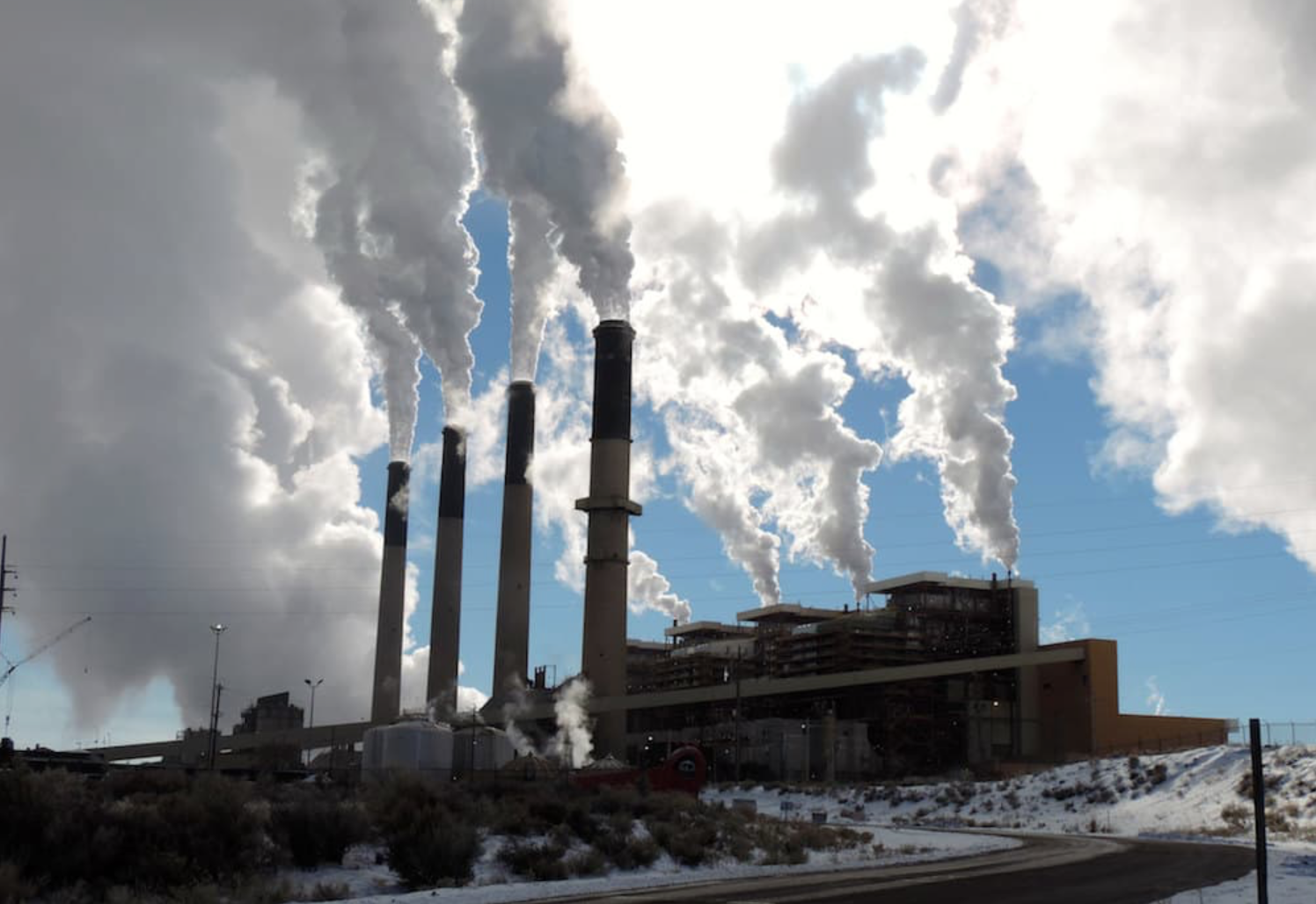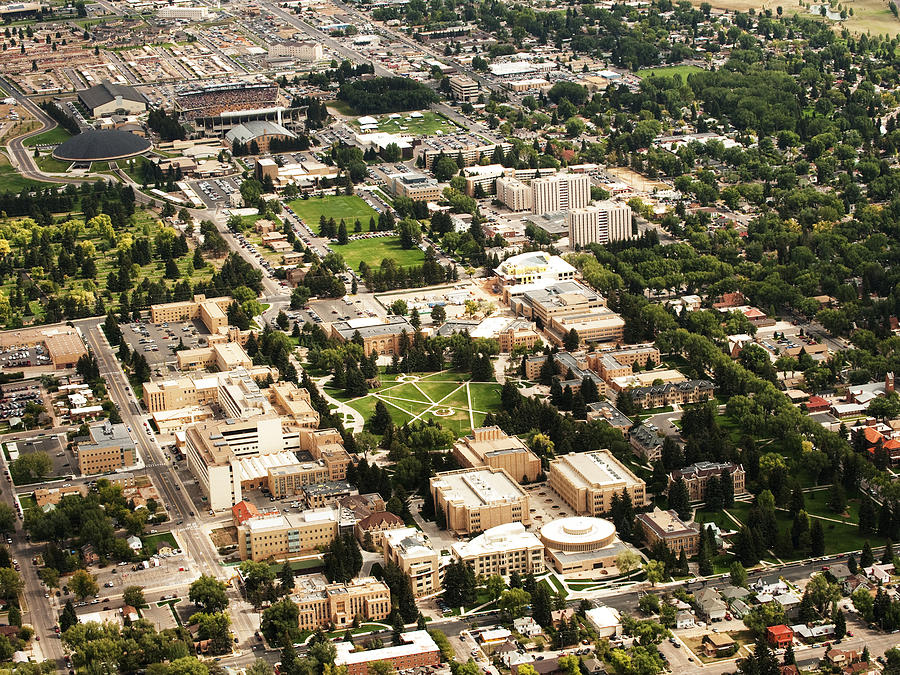
By Dustin Bleizeffer, WyoFile.com
Stakeholders are working behind the scenes to strike a compromise that avoids a federal shutdown of two coal-burning units at the Jim Bridger power plant, according to parties involved.
Hundreds of jobs — and the air quality in some of America’s most iconic viewsheds — hang in the balance.
But representatives from the three parties — PacifiCorp, Gov. Mark Gordon’s office and the U.S. Environmental Protection Agency — have offered few details about how a compromise would satisfy federal regional haze parameters while accomplishing PacifiCorp’s hope to keep burning coal until the two units are converted to natural gas in 2024.
“Obviously, we’ve been kind of at loggerheads, but we’re hopeful that we may have some ideas about a compromise,” Gordon told WyoFile Friday. Gordon met with Interior Department officials in D.C. at the end of January, and said the parties have made progress.
“Discussions with Wyoming are on a potential path forward for the Jim Bridger plant,” EPA Region 8 spokesman Richard Mylott told WyoFile.
Gordon’s Chief Energy Advisor Randall Luthi offered less enthusiasm in a Monday email. “At this point, there is no deal to be discussed,” Luthi wrote. “All options are on the table.”
Among those options is Wyoming filing suit against the federal agency, according to past communications between Gordon and EPA officials. Any deal must come with assurances that one party cannot “unilaterally reject” it at a later date, Luthi said.
Conservation groups, meantime, are preparing their own lawsuit and insist the EPA must enforce regional haze parameters at Jim Bridger — the largest industrial source of haze-contributing pollutants in Wyoming that threaten Grand Teton and Yellowstone national parks, as well as several wilderness areas.
“The degree of emissions spewed from this plant cannot be understated,” National Parks Conservation Association’s Senior Director & Counsel on Clean Air and Climate Stephanie Kodish said. “The Clean Air Act obligates the state to reduce those [regional haze-contributing] emissions.”
Jim Bridger’s unit 2 has been operating on borrowed time since PacifiCorp blew past a Dec. 31 deadline to install “selective catalytic reduction” controls — a mandate all parties agreed to in 2014. Gordon filed an emergency suspension order on Dec. 27, temporarily blocking EPA from forcing PacifiCorp to shut down the unit for noncompliance. That order expires in April.
The Berkshire Hathaway-owned PacifiCorp, which serves customers across six western states and operates as Rocky Mountain Power in Wyoming, has until the end of 2022 to install SCR controls at Jim Bridger unit 1. The utility has no plans to install the SCR regional haze controls on either of the two units, according to PacifiCorp spokesperson Tiffany Erickson. Instead, PacifiCorp has proposed operating the units at lower capacities as an alternative strategy to emit lower volumes of regional haze-contributing pollutants — sulfur dioxides, nitrogen oxides and particulate matter.
Parallel to negotiations, the EPA is moving forward with its proposed action set in motion in January to reject that plan. EPA is still accepting public comment on the proposed action. The agency could order unit 2 to shut down at the end of April, absent a compromise.
Meantime, Sierra Club and 38 other organizations on Monday filed a notice of intent to sue EPA for allegedly failing to enforce regional haze parameters at Jim Bridger and other industrial facilities across the nation. The move would further entangle Jim Bridger in a litigious regulatory and political battle over human-caused emissions that contribute to regional haze and climate change.
“The EPA has to start enforcing clean air rules because Wyoming and PacifiCorp clearly don’t prioritize clean air on their own,” Sierra Club Wyoming Chapter Organizer Rob Joyce said in a press statement. “Wyoming and PacifiCorp know they’re violating clean air rules, especially at the Jim Bridger power plant, and that pollution is continuing to damage our national parks, our health and safety, and our climate.”
EPA declined to comment on the pending litigation.
The decade-long saga that now threatens hundreds of Wyoming jobs at Jim Bridger and the Bridger surface coal mine stems from increasing costs to apply pollution controls to aging coal-fired power plants. It’s also rooted in a delicate negotiation between states and the EPA for how to ratchet down industrial sources of pollution that contribute to regional haze — a Clean Air Act mandate.
Politics play a role in the contentious battle, too. Strategies between PacifiCorp and the Wyoming Department of Environmental Quality for how Jim Bridger would comply with federal regional haze mandates have shifted based on differing priorities for EPA under the Obama, Trump and Biden administrations.
Rather than install SCR controls at Jim Bridger units 1 and 2 as agreed to under the Obama administration in 2014, PacifiCorp contemplated setting early retirement dates for the units. Under the Trump administration, the utility proposed operating the units at lower capacities as an alternative strategy to comply with regional haze parameters. Despite indications from EPA under the Trump administration that it might approve the proposed revision, the agency notified Wyoming and PacifiCorp in June 2021 — months after President Biden took office — of significant concerns with the proposal.
PacifiCorp, meantime, announced plans in 2021 to convert units 1 and 2 from coal to natural gas fuel in 2024 — a move that would reduce the plant’s contribution to regional haze and meet the federal standards — albeit well past current deadlines.
Gordon has accused the EPA of “acting in bad faith” for abandoning a “deal” struck under the Trump administration so the Biden administration can make “shallow talking points on the international stage.” U.S. Sen. Cynthia Lummis (R-Wyoming) is attempting to block Biden’s nominee to EPA’s top enforcement position unless the administration backs off from its “blatantly political” actions regarding Jim Bridger.
Despite the state’s accusations, there’s no excuse for not planning to comply with federal regional haze standards that were set eight years ago, Sierra Club Wyoming Chapter Director Connie Wilbert said.
“This is no surprise to [PacifiCorp], that this was coming and made known for eight years,” Wilbert said. “They were required to install these pollution controls or stop burning coal there, and they chose not to do that, very intentionally, which I think is telling us something. What they’re gambling with is real people’s lives.”
Gordon denies that the state and PacifiCorp relied on leniency under the Trump administration to approve a revision of the 2014 Regional Haze State Implementation Plan. Gordon maintains the proposed revision — operating the two Jim Bridger units at lower capacities rather than install SCR controls — would not only save PacifiCorp and its ratepayers money, it would achieve lower regional haze-contributing emissions.
Conservation groups dispute the accuracy of calculated emission reductions put forth by Wyoming DEQ. They’ve also noted that the state has pressured PacifiCorp and other regulated utilities in the state to not retire coal-burning units. Lawmakers passed Senate File 159 “New opportunities for Wyoming coal fired generation,” in 2019. The law requires regulated utilities that want to retire a coal unit in Wyoming to first make a good-faith effort to sell it to a third-party buyer.
Wyoming lawmakers have also passed measures in recent years requiring regulated utilities to prove to the Wyoming Public Service Commission it would be cost-prohibitive to retrofit coal plants with carbon capture and sequestration capabilities. Utilities must also prove to the PSC that retiring or converting a coal-unit to another fuel source will not jeopardize reliable power delivery to Wyoming ratepayers.
Gordon maintains that keeping coal-fired power plants online as long as possible is in the state’s interest not only for the sake of maintaining jobs, but to be able to apply and prove carbon capture opportunities — a technology that so far has not proven commercially viable for decades-old coal plants.
“Quite frankly, my view is that this [Biden] administration came with one priority, which was to stop using coal, and they were going to do everything in their power to get rid of coal,” Gordon said.
“Our point is that we need to be able to keep those plants open and the jobs there,” Gordon continued. “We want to do the right thing, and we felt like we had come that distance.”
Meantime, the nearly 50-year-old Jim Bridger plant outside Point of Rocks remains the single-largest industrial source of regional haze-contributing pollutants — sulfur dioxides, nitrogen oxides and particulate matter — in Wyoming, and third-largest in the nation, according to the National Parks Conservation Association’s 2020 analysis of federal data.
Wyoming is home to seven of the 50 worst industrial sources for regional haze in the nation and is the No. 1 industrial-source regional haze offending state in the nation, owing its status to several aging coal-fired power plants, large-scale surface mines and their proximity to national parks and wilderness areas, according to NPCA’s analysis.
Jim Bridger’s contributions to degraded visibility in Grand Teton National Park, Yellowstone National Park and other “Class 1” areas in the region is also a threat to Wyoming jobs and local economies of several gateway communities, according to the NPCA’s Kodish.
“We’re talking about a combined total of over 16,000 tons of emissions,” Kodish said, adding that the pollutants pose significant threats to human health.
“These are the very pollutants that cause respiratory problems, premature death, they make people lose days of work because of things like asthma attacks and kids lose days of school,” Kodish said. “These are real-world [impacts] not only in terms of the miles that they knock off of scenic vistas, but also because of the harm that they cause to human health.”
Visitors to national parks and wilderness areas expect to experience clean air, clear vistas and landscapes of rich color. Poor air quality diminishes the quality of experiencing these places, and can reduce the likelihood of return visits — a threat to local economies that count on robust visitation, Kodish said.
“The park has generally good air quality but is affected by air pollution from power plants, agricultural areas, industry, and oil and gas development,” according to a National Park Service “air profile” for Grand Teton National Park.
Toxic smoke from western wildfires has reversed decades of gains made via the EPA’s regional haze and other air quality programs, according to a 2021 Stanford University study. “We estimate that wildfires have accounted for up to 25% of [particulate matter with a diameter larger than 2.5 microns] in recent years across the United States, and up to half in some Western regions,” the study states.
Wildfire smoke is a growing health concern and contributing factor to degraded visibility in the West and across the nation, Kodish said. However, it doesn’t negate the importance of reducing regional-haze contributing emissions from industrial sources such as the Jim Bridger power plant.
“Those [industrial sources] are not only within our control, it is also the directive of Congress to our agencies to ensure that human-caused visibility-impairing pollution be reduced so that we can restore clear skies and healthy air quality to places like the Grand Tetons,” Kodish said.






